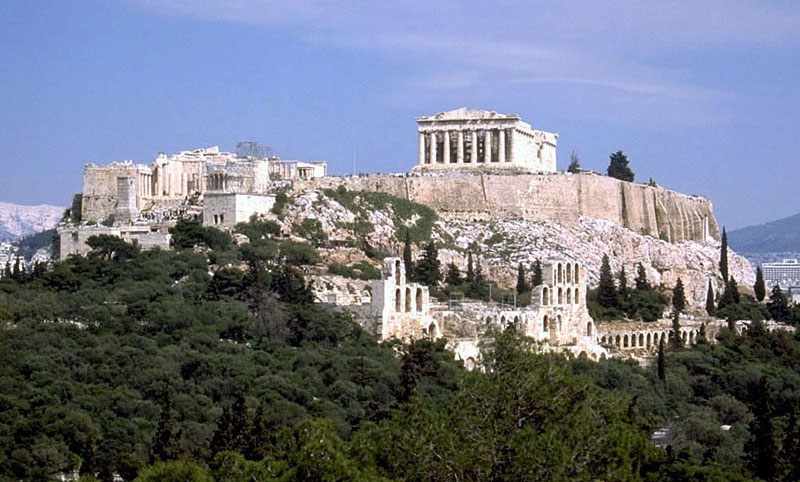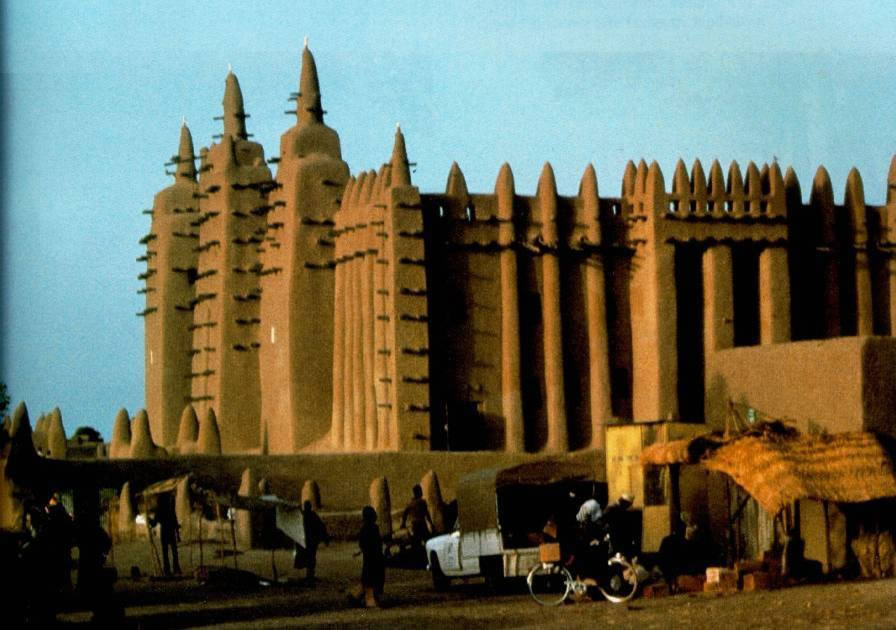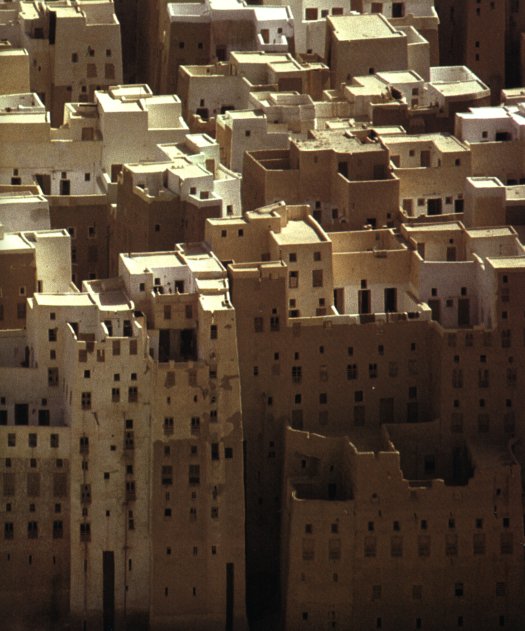 |
||||
|
The Art History of ArchitectureBy Chaz G. T. Patto - June 2023.
Part One: Ancient and Classical Architecture
The history of architecture is a rich tapestry that spans millennia, reflecting the evolution of human civilization, cultural beliefs, technological advancements, and artistic expressions. Let's explore the ancient and classical periods, encompassing the ancient architectural achievements of civilizations from prehistoric times to the fall of the Roman Empire. Prehistoric and Ancient Mesopotamian Architecture: The origins of architecture can be traced back to prehistoric times when early human settlements began constructing simple structures using natural materials such as wood, stone, and mud. As civilizations emerged, architectural techniques became more sophisticated. In ancient Mesopotamia, the Sumerians, Babylonians, and Assyrians developed monumental structures like ziggurats and palaces, characterized by intricate ornamentation, terraced forms, and grand entrances. Egyptian Architecture: Ancient Egypt produced some of the most iconic architectural wonders in history. The Great Pyramids of Giza, built as burial tombs for pharaohs, stand as enduring symbols of Egyptian civilization. These massive structures exhibit precise geometric proportions and were constructed using limestone blocks. Egyptian temples, such as the Temple of Karnak and the Temple of Luxor, showcased elaborate colonnades, hypostyle halls, and colossal statues of gods and pharaohs. Greek Architecture:
The ancient Greeks introduced a profound shift in architectural design, focusing on the ideals of harmony, balance, and proportion. The Doric, Ionic, and Corinthian orders became the foundation of Greek temple architecture. Examples like the Parthenon on the Acropolis in Athens exemplify the refinement of classical Greek architecture, with its use of fluted columns, entablatures, pediments, and friezes adorned with sculptural reliefs. Greek architecture also witnessed the development of theatres, agoras, and stadia, reflecting the importance of civic life and the arts. Roman Architecture: Building upon the Greek architectural principles, the Romans expanded the repertoire of architectural forms and construction techniques. They introduced the arch, vault, and dome, enabling the creation of monumental structures such as the Colosseum and the Pantheon. Roman architecture emphasized practicality, engineering prowess, and urban planning. The development of aqueducts, basilicas, and triumphal arches demonstrated the empire's engineering prowess and desire for grandeur. By exploring the architectural achievements of ancient civilizations, art historians and fans of architecture learn more about what sets the stage for the transformative periods to come. From the awe-inspiring pyramids of Egypt to the refined temples of Greece and the monumental structures of Rome, the foundations of architectural design were established, laying the groundwork for the subsequent developments in architectural history.
Part Two: Bridging the Ancient, the Traditional and the Non-EuropeanThe art history of architecture in the Americas, Asia, Africa, India, and the Middle East encompasses a rich tapestry of diverse cultures, traditions, and architectural styles and they should not be ignored. Many contemporary historians tend to ignore that these places have their own rich history of architectural styles. Let's explore the significant architectural developments and influences in these regions, highlighting their unique contributions to the global architectural heritage. Americas: Architecture in the Americas was a diverse and fascinating blend of cultures, reflecting the rich history and complex societies that flourished across the vast territories of North, Central, and South America before the arrival of Christopher Columbus in 1492. As an art historian, I am captivated by the incredible architectural achievements of these ancient civilizations, which showcase their advanced engineering skills, spiritual beliefs, and cultural identities. One of the most iconic architectural forms in the Americas is the pyramid. Found throughout Mesoamerica, pyramids served as monumental structures that held both religious and political significance. The Maya civilization, for example, constructed impressive stepped pyramids, such as the famous El Castillo at Chichen Itza in present-day Mexico. These pyramids featured steep staircases leading to the top, where religious ceremonies and rituals took place. The architectural precision of the Maya pyramids is remarkable, with careful attention paid to aligning the structures with celestial events. Moving south to the Andean region, the Inca civilization is renowned for its masterful stonework and monumental architecture. Machu Picchu, the "Lost City of the Incas," is a remarkable example of their architectural prowess. Located high in the Peruvian Andes, this city showcases the Inca's ability to harmoniously integrate their structures with the surrounding natural landscape. Stone walls, expertly fitted together without the use of mortar, form the foundation of buildings, temples, and terraces that cascade down the mountain slopes. The precision and stability of Inca stonework remain a testament to their advanced engineering techniques. In addition to pyramids and stone structures, the Americas were home to unique architectural forms such as earthen mounds and cliff dwellings. The Mississippian culture, which thrived in the southeastern United States from approximately 800 to 1500 CE, built impressive earthen mounds that served as platforms for ceremonial and elite residences. The most well-known example is Cahokia, near present-day St. Louis, Missouri, which boasted an enormous earthen pyramid known as Monk's Mound. These mounds showcased the social hierarchy and political power of the Mississippian societies. In the southwestern United States, the Ancestral Puebloans (formerly referred to as the Anasazi) inhabited the region's arid landscapes and created intricate cliff dwellings. These dwellings, built into the sides of canyons and cliffs, provided shelter, protection, and a sense of community. Mesa Verde in Colorado and the Betatakin ruins in Arizona are exceptional examples of these cliff dwellings. The structures were constructed using stone and adobe, blending seamlessly with the natural environment and reflecting the Ancestral Puebloans' sustainable living practices. Another remarkable architectural aspect of the Americas is the use of astronomical alignments. Many civilizations in the Americas had a profound understanding of celestial movements and incorporated them into their architectural designs. For instance, the ancient city of Teotihuacan in Mexico features the imposing Pyramid of the Sun, which aligns with the setting sun during certain times of the year. The Inca also aligned their structures with astronomical events, such as the Inti Raymi (Sun Festival) at the Temple of the Sun in Cusco, Peru. The architectural achievements of the Americas demonstrate the sophistication, ingenuity, and cultural richness of these ancient civilizations. Through their mastery of construction techniques, harmonious integration with nature, and deep spiritual connections, they left behind enduring architectural legacies that continue to inspire awe and admiration today. As an art historian, I am endlessly fascinated by the diverse architectural traditions that have shaped the Americas' cultural tapestry and serve as a testament to the creativity and innovation of the human spirit. Asia: Asian architecture spans a vast geographical area and encompasses a multitude of cultures and traditions. From the ancient civilizations of China and India to the Buddhist temples of Southeast Asia and the palaces of Japan, each region has distinct architectural expressions. In China, traditional architectural styles are characterized by their emphasis on harmony with nature, balance, and symbolism. Examples include the iconic pagodas, courtyard houses, and the grandeur of the Forbidden City in Beijing. In India, architecture is deeply rooted in religion and spirituality. The ancient temples of South India, such as the intricately carved temples of Mahabalipuram and the majestic temples of Khajuraho, showcase the mastery of stone carving and architectural craftsmanship. Southeast Asia is renowned for its magnificent temple complexes, such as the Angkor Wat in Cambodia and Borobudur in Indonesia. These structures reflect the influence of Hinduism and Buddhism and feature intricate carvings and architectural symmetry.
|
|
|||
|
|
||||
|
Africa:
The architectural history of Africa is as diverse as its landscapes and cultures. Ancient Egypt, with its monumental pyramids, temples, and tombs, stands as one of the most remarkable architectural legacies in the world. The Great Pyramids of Giza, the Sphinx, and the temples of Luxor and Karnak are iconic examples of Egyptian architecture. In West Africa, the architectural traditions of the Mali Empire and the ancient city of Timbuktu have left lasting impressions. The Great Mosque of Djenné, a UNESCO World Heritage site, is a remarkable example of Sudano-Sahelian architecture, featuring mud-brick construction and distinctive minarets. Ethiopia boasts a unique architectural heritage, notably the rock-hewn churches of Lalibela. These monolithic structures, carved from solid rock, display intricate detailing and religious significance. India: Indian architecture has a long and diverse history, influenced by various dynasties and religions. The ancient Indus Valley Civilization left behind the remains of well-planned cities such as Mohenjo-daro and Harappa, showcasing advanced urban planning and drainage systems. The rock-cut architecture of India, exemplified by the magnificent cave temples of Ajanta and Ellora, displays intricate sculptures, paintings, and architectural detailing. Islamic architecture has had a profound influence on the Indian subcontinent. The Mughal Empire's architectural marvels, including the Taj Mahal, Red Fort, and Jama Masjid in Delhi, fuse Persian, Islamic, and Indian architectural elements to create grand structures that embody beauty, symmetry, and intricate ornamentation. Middle East:
The Middle East has been a crucible of architectural innovation and influence for centuries. Islamic architecture, characterized by its emphasis on geometric patterns, calligraphy, and decorative elements, has left an indelible mark on the region. In Iran, the majestic domed structures of Isfahan, such as the Imam Mosque and Sheikh Lotfollah Mosque, exemplify the magnificence of Persian Islamic architecture. The intricate tilework, soaring domes, and symmetrical layouts are hallmarks of this style. In the Arabian Peninsula, the traditional architecture of cities like Riyadh and Jeddah showcases courtyard houses known as "Riad" and "Hijazi" architecture, respectively. These structures feature inner courtyards, ornate wooden detailing, and privacy/security was a paramount concern. The Middle East is also home to the ancient city of Petra in Jordan, a UNESCO World Heritage site renowned for its remarkable rock-cut architecture. The Nabateans carved intricate temples, tombs, and dwellings into the rose-colored sandstone cliffs, creating an awe-inspiring architectural marvel. Throughout Asia, Africa, India, and the Middle East, architectural styles have been shaped by a myriad of factors, including climate, geography, religious beliefs, cultural practices, and historical events. The use of local materials, innovative construction techniques, and a deep respect for tradition are common threads that unite these regions' architectural heritage. In recent times, these regions have witnessed the emergence of contemporary architectural trends, blending modern design principles with traditional influences. Architects in Asia, Africa, India, and the Middle East are creating innovative structures that respond to the challenges of urbanization, sustainability, and cultural preservation. This includes the iconic Burj Khalifa in Dubai, the Petronas Towers in Kuala Lumpur, and the National Museum of African American History and Culture in Washington, D.C. The art history of architecture in Asia, Africa, India, and the Middle East is a testament to the ingenuity, creativity, and cultural richness of these regions. From ancient civilizations to modern metropolises, the architectural legacies continue to shape the built environment, providing a tangible connection to the past while forging a path towards the future.
Part Three: Medieval and Renaissance ArchitectureLet's delve into the architectural developments of the European Medieval and Renaissance periods, encompassing the transformative era that witnessed the rise of Christianity, the Gothic architectural style, and the revival of classical ideals. Medieval Architecture: During the medieval period, architecture became intertwined with the influence of Christianity and the power of the Church. Romanesque architecture, prevalent from the 9th to the 12th centuries, featured thick walls, rounded arches, and small windows. Prominent examples include the Abbey of Cluny in France and the Durham Cathedral in England. However, it was the emergence of Gothic architecture that marked a significant departure. Gothic Architecture: Gothic architecture, which flourished from the 12th to the 16th centuries, was characterized by its aspiration towards height, light, and divine transcendence. Flying buttresses, ribbed vaults, pointed arches, and large stained glass windows became defining features of Gothic cathedrals. Structures such as Notre-Dame Cathedral in Paris, Chartres Cathedral, and Canterbury Cathedral exemplify the soaring verticality and intricate detailing of this style. Gothic architecture aimed to evoke a sense of awe and spiritual connection, harnessing the potential of architectural elements to reach towards the heavens. Renaissance Architecture: The Renaissance period witnessed a resurgence of interest in the architectural forms and ideals of ancient Greece and Rome. Architects, inspired by classical texts and principles, sought to revive the harmony, proportion, and symmetry of the classical world. The Renaissance architectural style emphasized humanism, rationality, and the integration of art, science, and architecture. Palazzo Medici Riccardi in Florence, the Villa Rotonda in Vicenza, and St. Peter's Basilica in Rome exemplify the Renaissance ideals of balance, perspective, and geometric precision. Architects such as Filippo Brunelleschi, Leon Battista Alberti, and Andrea Palladio played crucial roles in defining the Renaissance architectural style. The shift from Gothic to Renaissance architecture marked a transition from the verticality and otherworldly aspirations of the Gothic era to a human-centered approach that embraced proportion, balance, and the revival of classical ideals. The architectural achievements of this period set the stage for the subsequent architectural movements and became enduring symbols of the cultural and artistic blossoming of Europe during the Renaissance. The architecture of each era highlights the transformative nature of these periods, from the spiritual and majestic Gothic cathedrals to the harmonious revival of classical principles during the Renaissance. These architectural achievements laid the groundwork for the architectural revolutions that would follow in the modern era.
Part Four: Modern and Contemporary ArchitectureNext let's delves into the dynamic and diverse world of modern and contemporary architecture, where innovative ideas, technological advancements, and social changes have shaped the built environment from the late 19th century to the present day. Emergence of Modernism: The late 19th and early 20th centuries witnessed a radical departure from traditional architectural styles with the emergence of modernism. Architects like Louis Sullivan and Frank Lloyd Wright in the United States, and Adolf Loos and Walter Gropius in Europe, rejected historical ornamentation and embraced a functionalist approach. The use of new materials, such as steel, glass, and reinforced concrete, allowed for the creation of innovative structures that emphasized simplicity, clean lines, and open floor plans. International Style and Bauhaus: The early 20th century also saw the rise of the International Style, a movement characterized by the principles of functionalism, simplicity, and the elimination of ornamentation. Architects such as Ludwig Mies van der Rohe, Le Corbusier, and Walter Gropius played pivotal roles in defining this style. The Bauhaus, a renowned German design school founded by Gropius, merged art and craftsmanship, advocating for the integration of design, industry, and mass production. Postmodernism and Deconstructivism: In the latter half of the 20th century, architecture underwent a period of critical reassessment and experimentation. Postmodernism emerged as a reaction against the perceived limitations of modernism. Architects such as Robert Venturi, Philip Johnson, and Michael Graves embraced historical references, irony, and playfulness in their designs, challenging the strict modernist principles. Postmodern structures often featured eclectic forms, bold colors, and decorative elements. Deconstructivism, influenced by the theories of deconstruction in philosophy, emerged as a provocative architectural style in the late 20th century. Architects like Frank Gehry, Zaha Hadid, and Daniel Libeskind pushed the boundaries of form and geometry, creating fragmented, distorted, and unconventional structures that challenged traditional notions of architectural composition. Sustainability and Green Architecture: As the environmental impact of human activities became a pressing concern, sustainable architecture emerged as a significant movement. Architects began integrating principles of energy efficiency, use of renewable materials, and harmonious coexistence with the natural environment. Green roofs, passive design strategies, and the use of recycled materials became common features in sustainable architecture. Contemporary Trends: In the 21st century, contemporary architecture continues to evolve with a focus on innovation, technology, and cultural expression. Parametric design, digital fabrication, and biomimicry are increasingly influencing architectural practices. Additionally, there is a growing emphasis on creating socially responsible and inclusive spaces that address issues of urbanization, housing, and community engagement. Conclusion: The art history of architecture showcases the transformative journey from the modernist revolution to the dynamic and diverse architectural landscape of today. From the functionalist principles of modernism to the expressive forms of postmodernism and deconstructivism, architecture has continually evolved, reflecting the changing societal values, technological advancements, and environmental concerns of each era. The contemporary architectural scene remains an ever-evolving canvas for innovation, sustainability, and the exploration of new ideas, promising an exciting future for the built environment.
Contemporary Architectural Styles and Movements, Listed Alphabetically
|
||||





